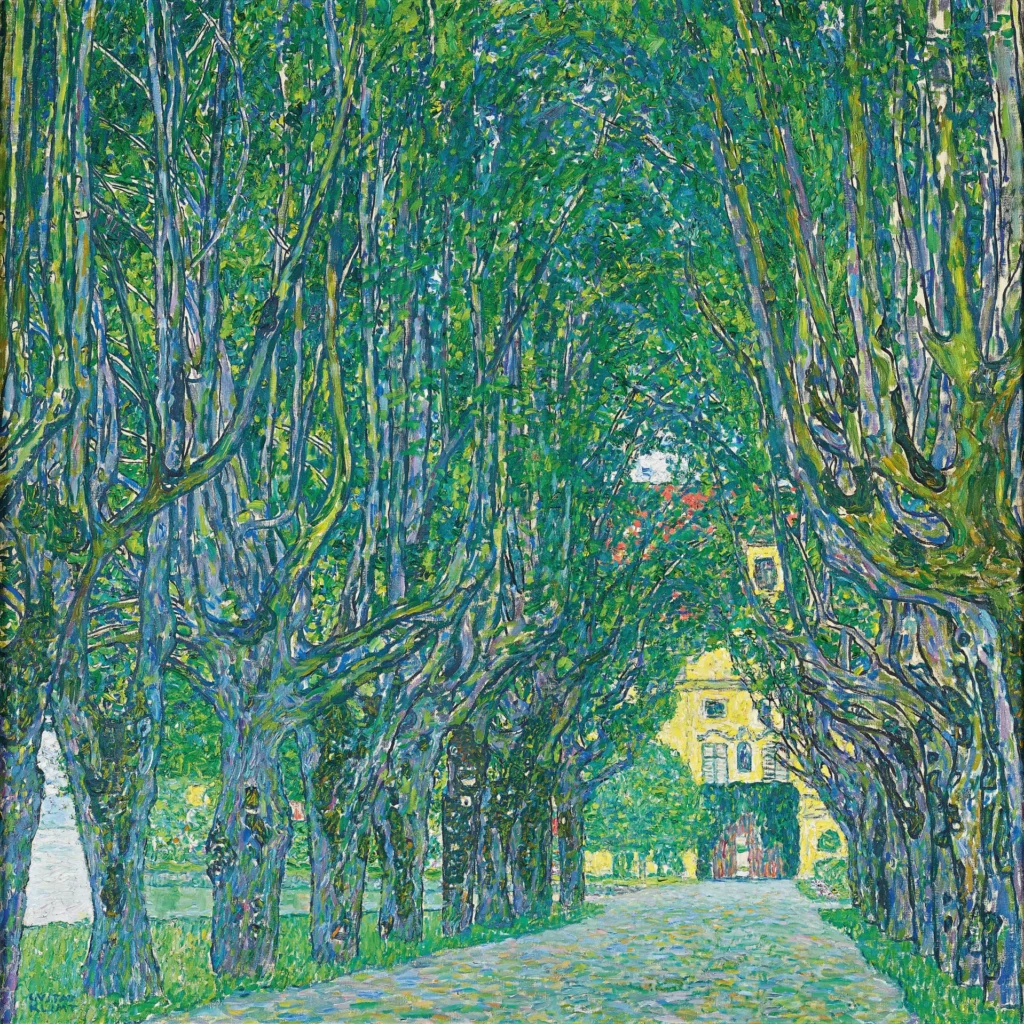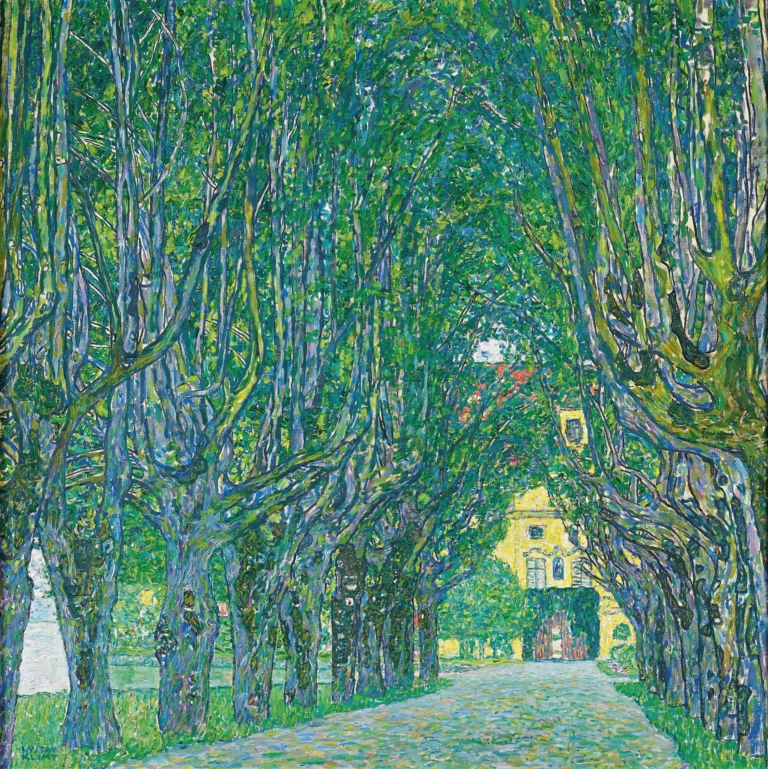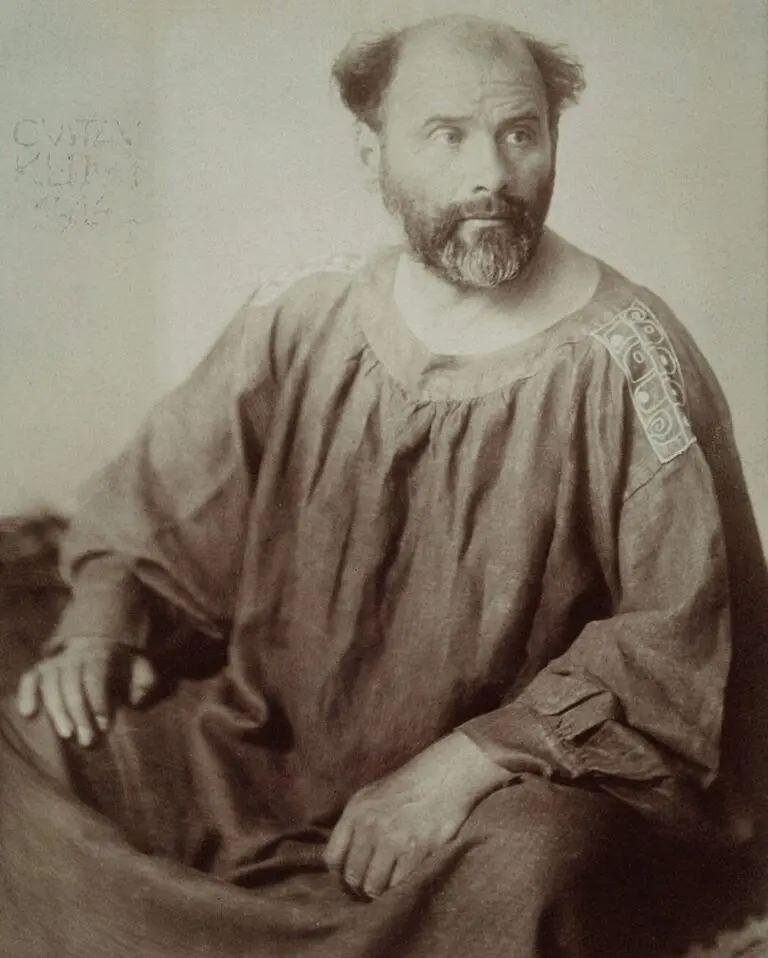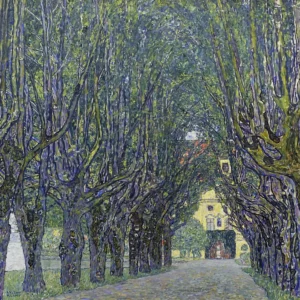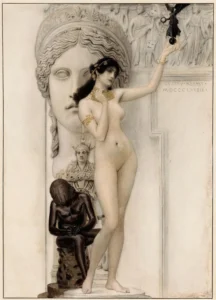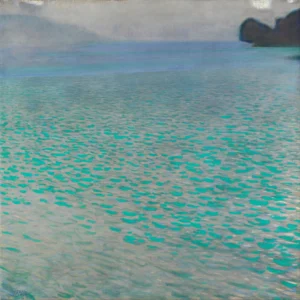Avenue to the Kammer Castle (1912)
Created in 1912, 'Avenue to Schloss Kammer' is a captivating landscape painting by Gustav Klimt, featuring a grand entrance avenue leading to Schloss Kammer by the Attersee in Austria. Uniquely employing foreshortening and a vibrant palette influenced by Impressionism, the artwork stands out for its complex structure and striking color harmonies. Klimt's dedication to the representation of nature and light is evident, making this piece a vital representation of his late landscapes, revealing his fascination with biological growth and the spiritual connections to the natural world.
1912
About the Artwork
Did You Know
Liked what you see? Add it to your collection.
Enjoyed reading? Share it.
... continued
Location and Setting
The painting depicts the entrance facade of Schloss Kammer, a castle located on the Attersee in Austria. It focuses on the long avenue of tall linden trees leading to the castle entrance, which still exists today.
Composition and Style
The painting is characterized by its use of foreshortening, where the rows of trees on either side create a sense of depth, which was unusual for Klimt's landscape paintings that were typically densely composed and flat. The treetops are painted in small dabs of color in an almost pointillist manner, reflecting Klimt's planar style. The composition creates a complex, net-like structure with the treetops occupying a large part of the picture.
Color Palette
Klimt used an unusual color combination of blue, yellow, and green, influenced by the French impressionists and possibly by Eugène Chevreul's book on "color harmonies." Shadowed areas are depicted in cool blue, while sunlit areas are in cool yellow-green.
Size and Medium
The painting is executed in oil on canvas and measures 110 x 110 cm, a standard size and square format that Klimt often used for his landscapes, likely with exhibition in mind.
Artistic Context
This work is part of Klimt's late landscapes, which he produced during his summer vacations in the Salzkammergut region. These landscapes allowed him to experiment freely and express his concerns with biological growth and the cycle of life. The painting aligns with emergent modernist tendencies and shows a symbiosis of naturalism and ornament, similar to the work of Egon Schiele.
Current Location
The painting is housed at the Belvedere in Vienna, Austria.




